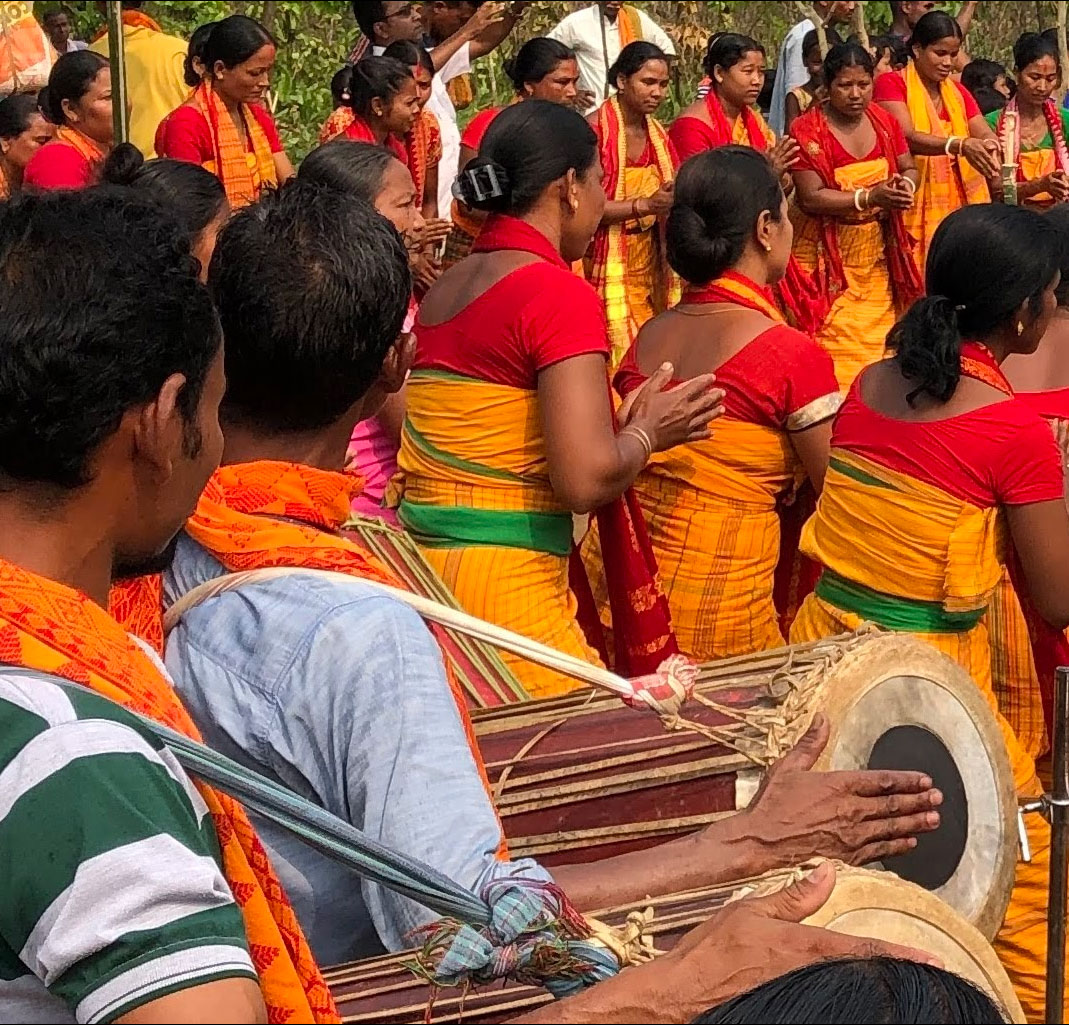We were driving north towards Guwahati from Dhubri in lower Assam when, on an impulse, we veered off the highway to explore the rural back roads. It was a decision I wouldn’t regret, as we stumbled upon a Rongali Bihu celebration in a Bodo village. People were dressed in bursts of oranges and reds amidst lush green surroundings and the music of drums and flutes; it was the epitome of the vibrancy of coexistence.
A large group of Bodo women dressed in their colorful dhoknas and scarves were engaged in a dance. It was the Baguramba, a traditional Bodo dance with steps both simple and graceful. Because traditional clothing in many parts of India has become less common, their handwoven dhoknas stood out. In warm yellows and oranges, they were decorated with intricate green and red motifs and were probably locally spun and dyed. The dhokhna, unlike other traditional attire of Assamese women such as the two-piece mekhela chador, is a single length of woven fabric draped around the body starting from the chest and ending at the ankles. And on this day, as they danced, the drape, colors, and fabric were in tune with the task, the weather, and the mood.
The Bodo are the largest minority group of Assam and consist of several tribes with a variety of cultures. This village along the Brahmaputra river valley seemed untouched by the trappings of typical modern development. The green rolling plains with thatched homes ensconced behind areca nut palms, banana plants, and the ubiquitous red hibiscus flowers overlook verdant fields and narrow crisscrossing paths. They seem unaware of what lies beyond their rivers.
I had a sense of existence in harmony with nature, where excess had been done away with, and everything was how it should be.
#custom#natural_state#whim




